Freshly picked bell peppers add a welcome crunch and color variety to summer dishes such as salads, salsas, and kebabs. Wouldn’t it be great if this summer you could enjoy your own homegrown sweet bell peppers? Learn how to grow bell peppers with this quick and easy guide.
Growing bell peppers is a fun and rewarding experience. Bell peppers are a versatile ingredient that can be used in many different dishes. They can be eaten raw, cooked, or pickled, and they come in a variety of colors, including red, green, and yellow. Bell peppers are also relatively easy to grow, and they can be grown in both indoor and outdoor environments.
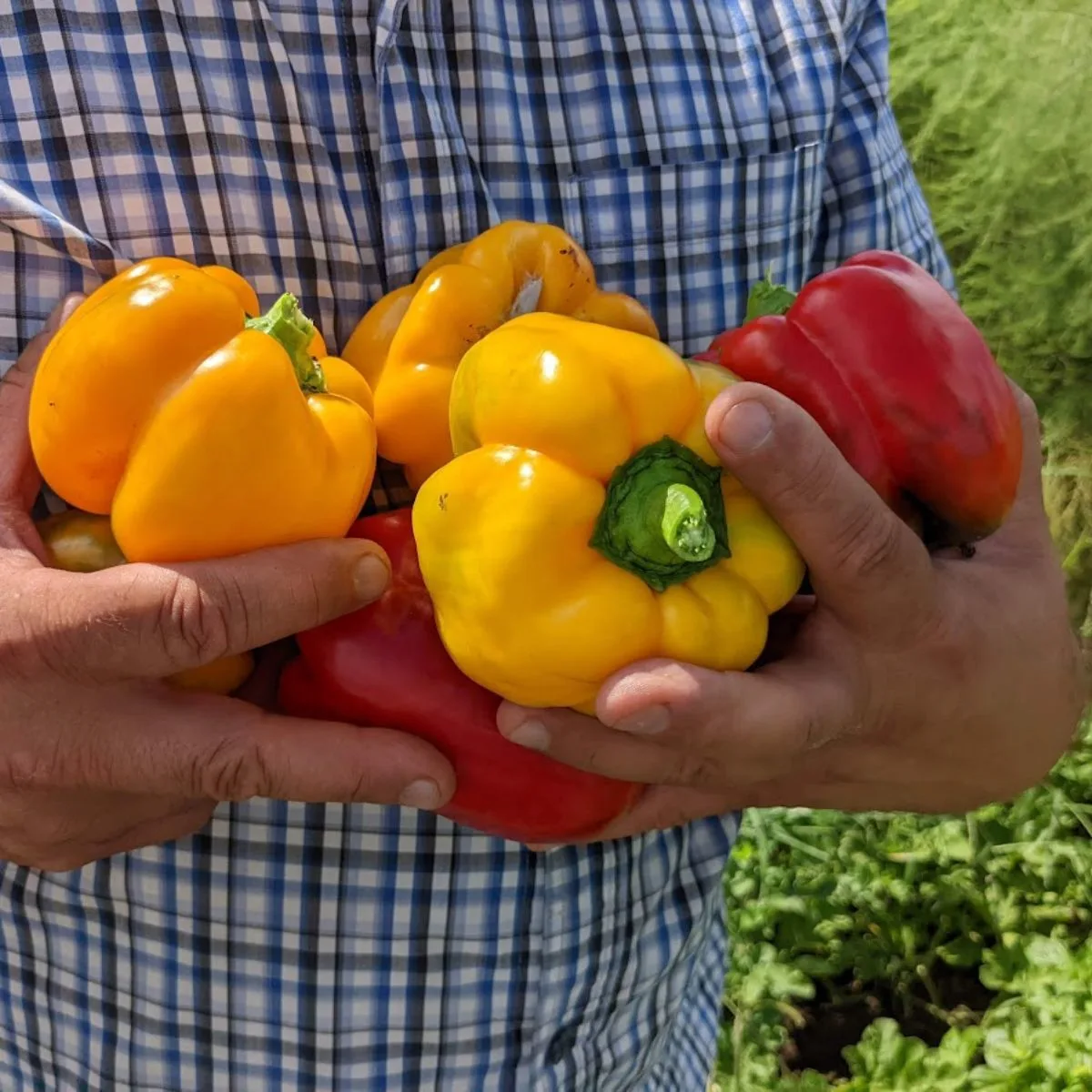
First, let’s learn more about peppers.
About Bell Peppers
Bell peppers, also called sweet peppers, are from the species Capsicum annuum, and can be grown in different colors – including red, yellow, orange, green, white, or even purple. Red, yellow, orange, and green are the most common colors we see in grocery stores.
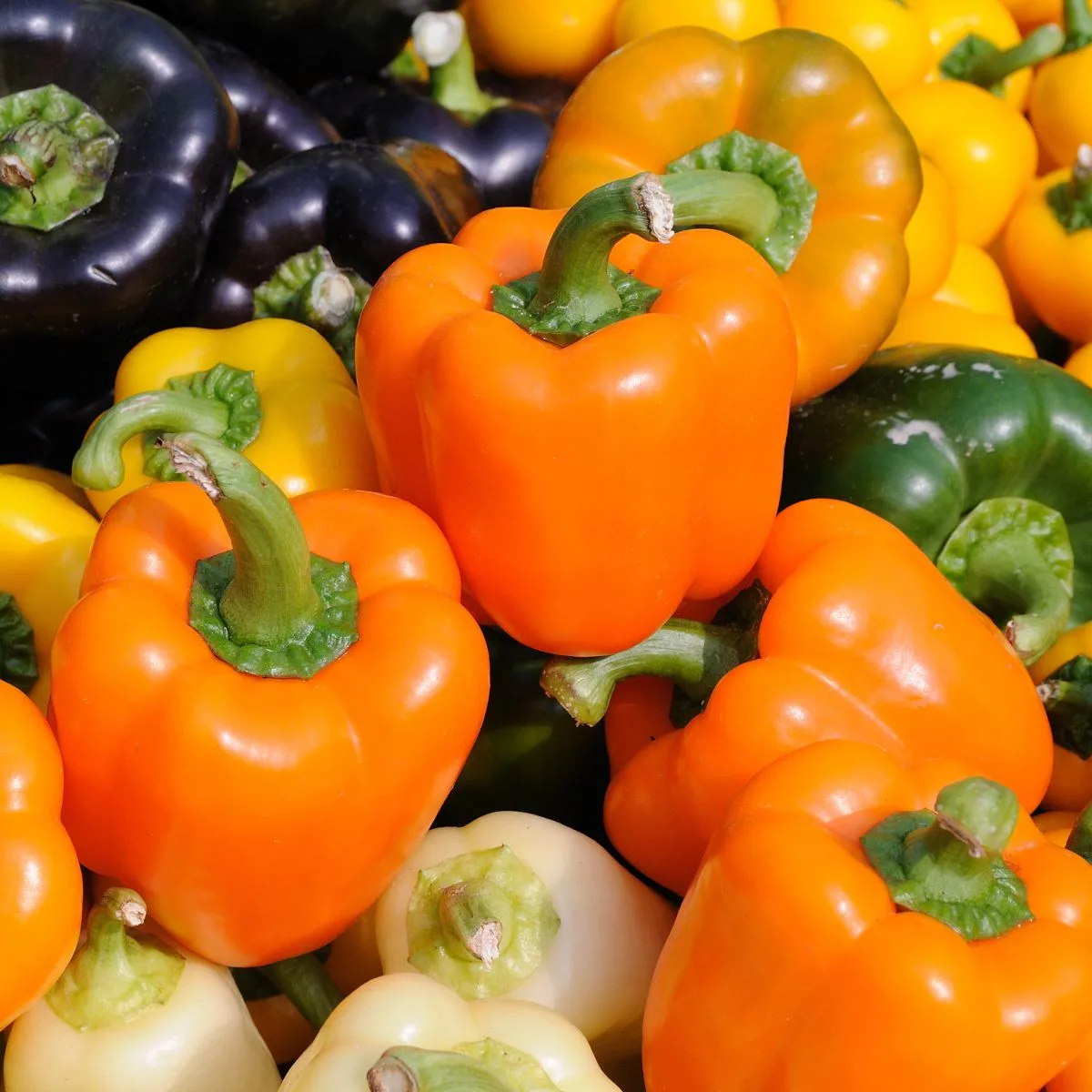
Peppers are originally native to Mexico, Central America, and the northern part of South America. Their seeds were imported to Spain in 1493 and the pepper then spread throughout Europe and Asia. This mild bell pepper cultivar was created in the 1920s in Hungary. Now we see them all over and they can easily be grown by home gardeners.
They prefer warm, moist soil with a soil temperature of 70-85 degrees Fahrenheit. The plant can grow as tall as three feet and the fruits can be from 3-12 inches long (yes, you can truly get 12 inches long peppers!), depending on their variety.
Bell peppers are a popular vegetable that can help to enhance the flavor of any dish. Whether eaten raw, roasted, stewed, or fried, bell peppers are incredibly versatile and easy to use in a variety of recipes.
How to Grow Bell Peppers
Here’s what you need to know about growing a nice, healthy pepper plant.
When growing bell peppers, it is important to choose a sunny spot with well-drained soil. Bell peppers also need lots of water, so be sure to water them regularly. For best results, fertilize bell peppers every two weeks with a high-quality fertilizer. When the bell peppers are about four inches long, it is time to start harvesting them. But, if you love them colorful, you’ll need to wait a bit longer, as they turn from green to red, yellow, orange, or purple, depending on which variety you planted.
How to plant
Planting bell peppers is relatively easy, provided you have the right conditions. First, choose a planting site with full sun and well-draining soil, as bell peppers need a good amount of sunlight and do not tolerate wet soil.
A light mulch such as straw can keep weeds down while improving moisture retention. Next, dig shallow trenches or holes 8 to 10 inches deep and add 2-3 inches of composted manure or other organic matter. This will help introduce beneficial nutrients into the soil that bell peppers need to thrive.
Place the bell pepper seedlings in the trenches or holes, and cover them with soil and water gently until they are firmly rooted.
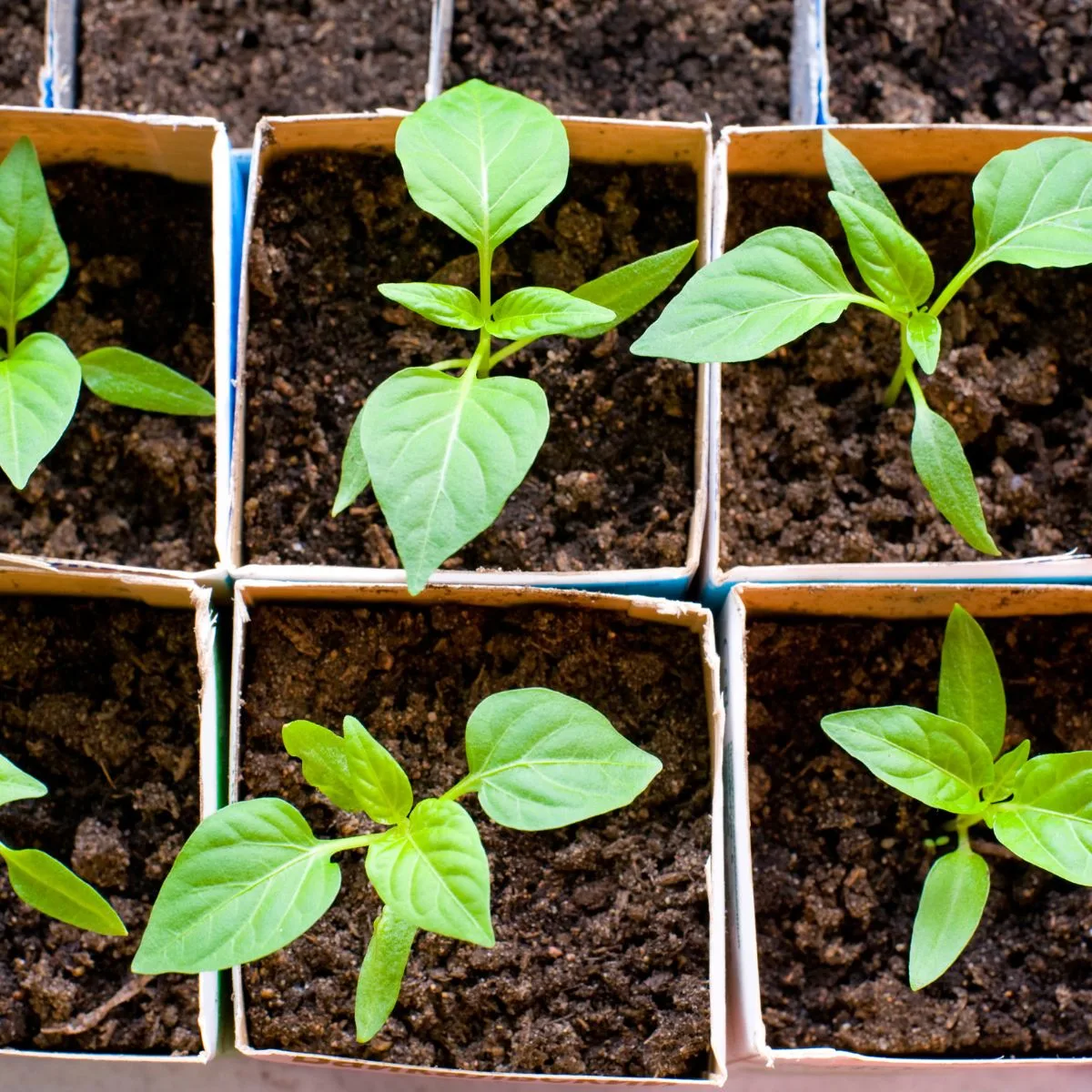
How to care for your plants
There are some important steps you can take to ensure your bell pepper harvest is as healthy and plentiful as possible. First, bell peppers require plenty of light: whether from the sun or from fluorescent lamps indoors.
Make sure your bells get at least 6 hours of direct sunlight or 8-12 hours of artificial light each day. Also, bell peppers like well-draining soil that’s slightly acidic – adjust the pH level accordingly if necessary. Bell peppers thrive on nutrients, so make sure you feed your plants regularly using fertilizer or compost tea to keep them producing delicious fruits.
When watering bell peppers, avoid getting the foliage wet as much as possible: rather than direct watering, water around the roots and support adequate drainage so that excess water doesn’t remain near the bell pepper plants.
How to harvest your bell peppers
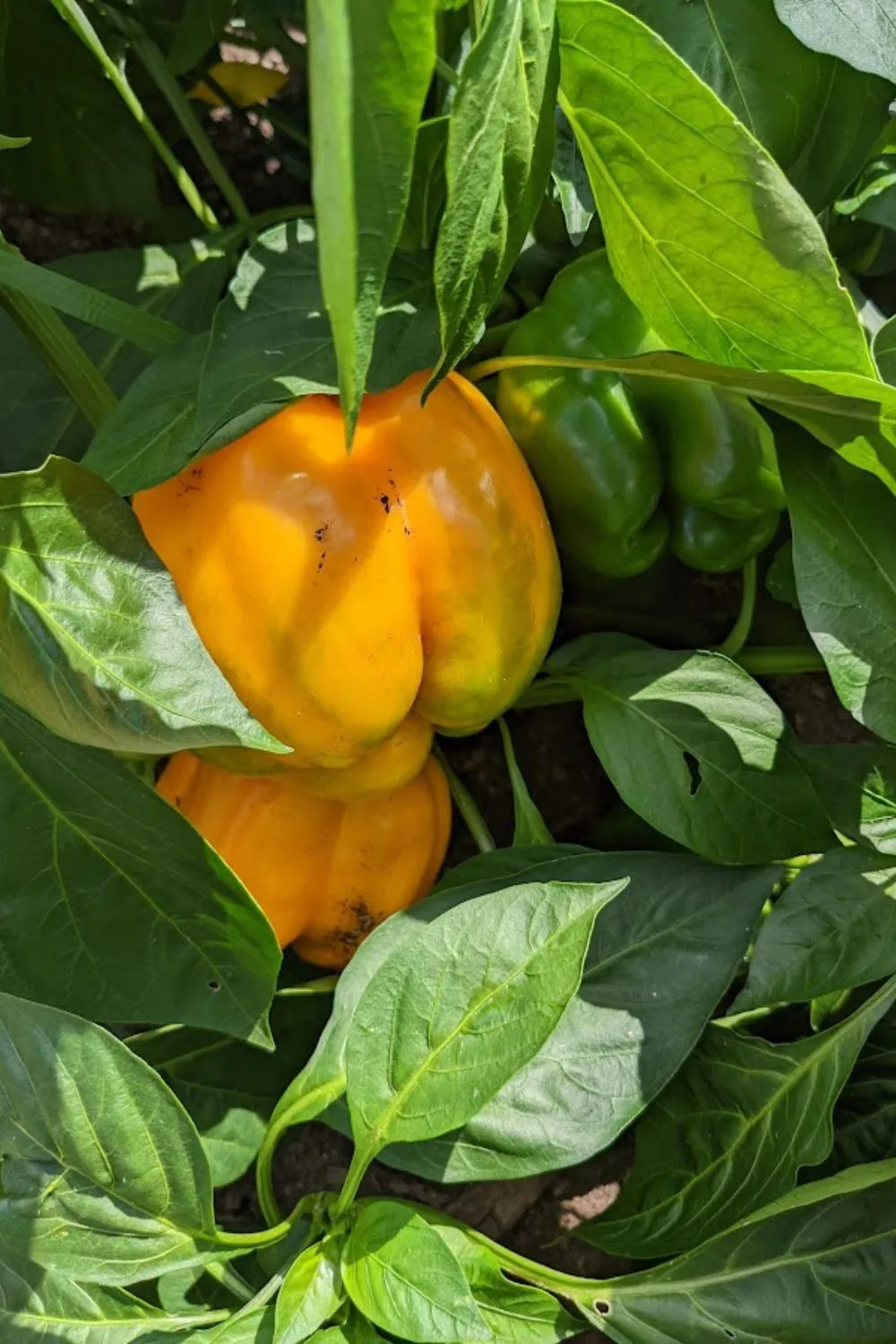
Harvesting bell peppers is relatively simple once they begin to turn their final color. You can test the maturity of bell peppers by feeling the pepper itself and looking at its size. As bell peppers ripen, they will become sweeter and less bitter in taste.
Once a bell pepper has fully ripened, you can cut it from the stem with a pair of scissors or simply pull it off. It is generally best to wait for bell peppers to fully ripen before harvesting so that you get sweet-tasting fruit as opposed to an unripe bell pepper which will have a very bitter taste and texture.
Be sure not to tug too hard on the bell pepper while harvesting, or you may inadvertently damage other plants around it!
Reasons to Grow Bell Peppers
Here are some common reasons you might want to grow your own peppers:
- They are easy to grow
- Peppers taste great
- Saves you money on your grocery bill
Bell Pepper Pests and Diseases
Some of the most common bell pepper pests are aphids, white flies, and spider mites. Check the plants frequently for pests, especially under the leaves.
More Vegetable Growing Guides
Growing a vegetable garden couldn’t be easier when you know the dos and donts of each vegetable you want to grow. Here are a few home garden favorites:
- how to grow sweet potatoes
- how to grow beans in containers
- how to grow potatoes
- how to grow asparagus
- how to grow tomatoes in containers
FAQs About Growing Peppers
These questions are often asked about growing bell peppers.
What is the best way to grow peppers?
Indoors or out, with rich soil that is slightly sandy or loamy, and with warm and well-draining soil.
How long does it take for a bell pepper to grow?
From 60 to 90 days.
Are bell peppers easy to grow?
Yes, just make sure they get plenty of light. Temperature will be an important factor as well.
When the peppers are fresh, they lend a sweet yet mild flavor to salads as well as an array of cooked dishes – from salsa and stir-fry to chicken wings. The bell pepper’s firm texture and vibrant color also make them an ideal choice for adding pizzazz to any plate presentation. For these reasons and more bell peppers can be found on grocery store shelves all year round – making it one of the most widely available vegetables on the market today and now you know how to grow your own!
There’s no doubt that bell peppers should be your go-to ingredient when looking for flavor enhancement. Not only do you get the best taste around but their health benefits are unparalleled – packed with antioxidants like vitamins C and A, bell peppers just might become your new favorite vegetable.
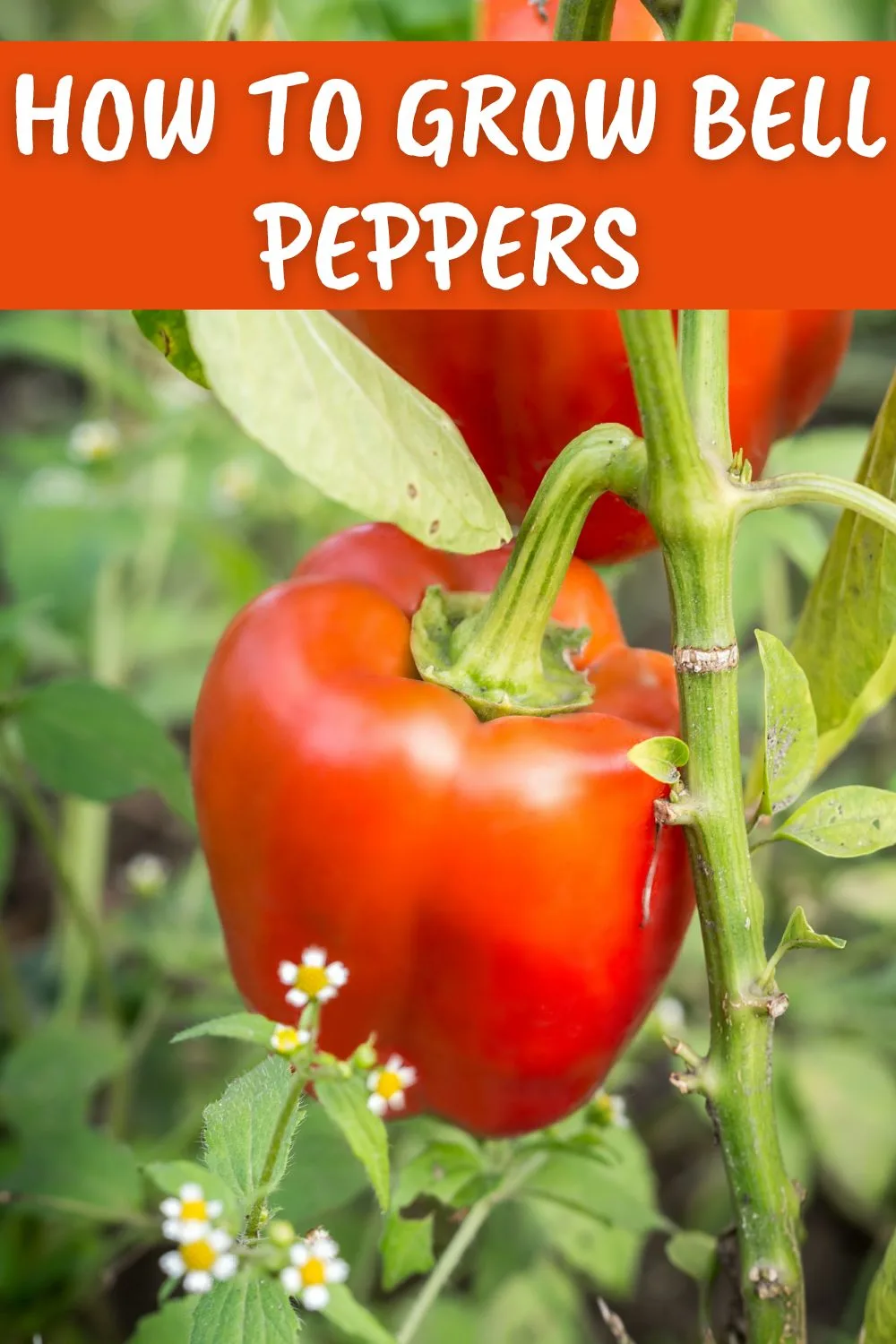
Adriana Copaceanu is a passionate nature lover living in the country on her dream property where she grows vegetables, lavender, and wildflowers that she shares with the wildlife they attract. When she's not in the garden, she loves spending time with her chickens and planning her next nature project. Check out her books below:
How to Grow Lavender for Fun and Profit: Lessons Learned from Planting Three Hundred Lavender Plants


How To Grow Chili Peppers: Everything You Need To Know
Sunday 15th of January 2023
[…] bright red. This is also usually a good indication of their heat level. The same is not true for bell peppers which can be yellow, orange, and red, and not hot at […]
16 Best Companion Plants For Peppers (And 4 To Avoid)
Friday 25th of November 2022
[…] your companion planting journey. Consider bush beans, lima beans, brussels sprouts, pole beans, bell peppers, hot peppers, green beans, the onion family, the cabbage family, and other good companion plants. […]